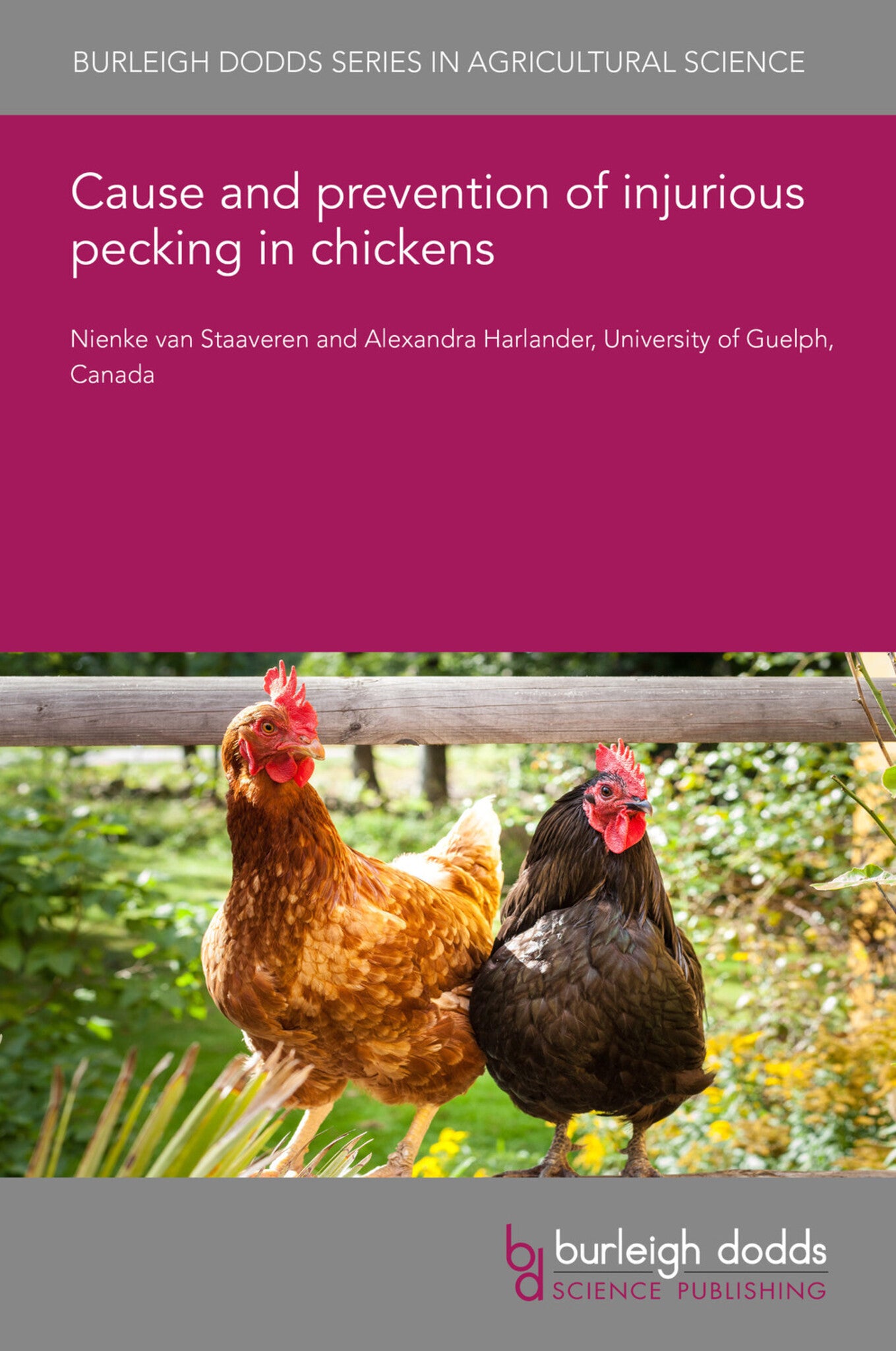We're sorry. An error has occurred
Please cancel or retry.
Cause and prevention of injurious pecking in chickens
Regular price
£25.00
Sale price
£25.00
Regular price
£25.00
Unit price
/
per
Sale
Sold out
Re-stocking soon
Poultry is the most widely farmed land animal, comprising over 80% of the main livestock populations. The high prevalence of injurious pecking (IP) in poultry is a major concern from animal welfare...
Read More

Some error occured while loading the Quick View. Please close the Quick View and try reloading the page.
Couldn't load pickup availability
- Format:
-
28 September 2020

Poultry is the most widely farmed land animal, comprising over 80% of the main livestock populations. The high prevalence of injurious pecking (IP) in poultry is a major concern from animal welfare, societal, and economic points of view. IP is defined as bird-to-bird pecking that results in or has a high likelihood of causing integument injury and psychological harm to the victim. In this chapter, we describe three forms of IP – tissue pecking (TP), aggressive pecking (AP), and feather pecking (FP). Furthermore, it explores the two major views explaining the origin of severe FP, the most prevalent form of IP. The first, the ethological view, emphasizes the role of the environment in creating motivational frustration. In contrast, the dysfunctional view identifies underlying neurobiological dysfunctions induced by intense or sustained stress as the cause of severe FP. Finally, we discuss risk factors and management strategies that are used to reduce IP.

Price: £25.00
Publisher: Burleigh Dodds Science Publishing
Imprint: Burleigh Dodds Science Publishing
Series: Burleigh Dodds Series in Agricultural Science
Publication Date:
28 September 2020
ISBN: 9781786768797
Format: eBook
BISACs:
TECHNOLOGY & ENGINEERING / Agriculture / Animal Husbandry, Poultry farming, TECHNOLOGY & ENGINEERING / Agriculture / Sustainable Agriculture, Sustainable agriculture, Animal husbandry

1 Introduction 2 Identifying the underlying causes of injurious pecking 3 Practical attempts and management strategies to reduce injurious pecking 4 Conclusion 5 Future trends in research 6 Where to look for further information 7 References



